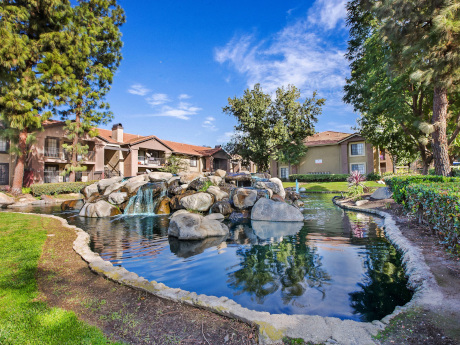— By Shane Shafer, Managing Director, Northmarq —
The Inland Empire submarkets have maintained rent increases, low vacancy rates and employment growth. Plus, unlike other Southern California markets, the IE has seen a migration into the area — not out. The population of the Inland Empire region in an average year expands by about 50,000 residents. This is the fifth largest gain among the largest 50 metros, per 2021 Census numbers.
A Jobs-Rich Market Gaining Momentum
Local employment showed signs of growth and resurgence, adding jobs each of the past four quarters. Year-over-year total employment increased by more than 83,000 positions, which equates to a gain of more than 5 percent. Contrast this with other markets, and you can see why the Inland Empire is on most investors’ top 10 lists for buying, and why expectations are so high for the market to have continued rental growth. The logistics sector is one of the biggest and fastest growing in the United States. These jobs have consistently grown over the past 10 years, increasing by more than 10 percent.
This year, Amazon inked a record-setting 4.1-million-square-foot facility in Ontario, while companies like
Target, Shopify, Best Buy, AutoZone and others also made large commitments.
The area has also had increases in the healthcare field with new expansion plans like Kaiser Permanente in Riverside County, as well as the expansion of hospitals in Riverside, Moreno Valley, Murrieta and
Wildomar. These projects are estimated to be built between 2023 and
2027, creating more than 1,000 permanent jobs. This will certainly allow
the Inland Empire to bolster the continued growth of residents in the
market.
Increased Population of Renters Seeking Affordability
The Inland Empire is welcoming more residents and has seen a migration unlike any other county in Southern California. Many residents are moving to the Inland Empire for well-paying jobs and affordable housing. The median single-family home price in the Inland Empire is about $575,000, compared to about $900,000 in San Diego and $1.2 million in Orange County. Similar trends are apparent in apartment rents. Average rents in the Inland Empire are about $400 per month lower than rents in San Diego, and nearly $750 per month lower than Orange County. This renter migration is creating high demand for housing, allowing for continued rent growth while maintaining very low vacancy rates in all sectors.
Market Fundamentals Have Cooled but are Still Some of the Best in Southern California
Rents grew mainly in the first quarter and eased in the remaining three quarters. Over 2022, the vacancy rate for multifamily has moved up a bit to just under 5 percent. Rent growth (on average) has slowed to a 3 percent increase this year. Although this is lower than last year’s growth, it’s better than most other Southern California markets.
Strong population increase and sustainable job growth expectations project increases in rents closer to 4 percent with vacancy rates maintaining at 5 percent over the next few years. These market fundamentals show that the Inland Empire is a desirable market for investors — a market that will allow them to take advantage of future potential. The market segment best prepared for this are the mid-market vintage buildings, which are located in the more affordable areas. These properties showed the best rent growth increases and vacancy rates in 2022.
The continued strength in higher leases being signed by new tenants is encouraging for owners, who are still seeing double-digit rent increases. Although these are lower rates than last year’s increases of upper teens to 20 percent, this growth is still very positive and shows continued momentum in the market.
Homeownership is still a challenge, with the average home selling for $575,000. Assuming a 20 percent down payment at current mortgage rates, monthly payments average $3,800. Newer construction multifamily that would be competing for these residents in the Inland Empire go for, on average, $2,600. This makes renting a more affordable option than owning.
The Inland Empire is not insulated completely from the changes in the market but was more resilient than most other markets. Its continued job growth and resident migration made the reduction in market fundamentals minimal. Investors will be looking for value. They’ll turn to the markets that will sustain short-term weakness (if any), with a potential boom on the way out. The Inland Empire has the infrastructure and foundation to take advantage of this. We are still seeing and fielding calls from investors clamoring to get the next multifamily deal in this location.



